Related Research Articles

A mammary gland is an exocrine gland in humans and other mammals that produces milk to feed young offspring. Mammals get their name from the Latin word mamma, "breast". The mammary glands are arranged in organs such as the breasts in primates, the udder in ruminants, and the dugs of other animals. Lactorrhea, the occasional production of milk by the glands, can occur in any mammal, but in most mammals, lactation, the production of enough milk for nursing, occurs only in phenotypic females who have gestated in recent months or years. It is directed by hormonal guidance from sex steroids. In a few mammalian species, male lactation can occur. With humans, male lactation can occur only under specific circumstances.
Production of milk (lactation) from a male mammal's mammary glands is well-documented in the Dayak fruit bat and the Bismarck masked flying fox. The term "male lactation" is not used in human medicine. It has been used in popular literature, such as Louise Erdrich's The Antelope Wife, to describe the phenomenon of male galactorrhea, which is a human condition unrelated to childbirth or nursing. Newborn babies of both sexes can occasionally produce milk. This is called neonatal milk and not considered male lactation.

The Nigerian Dwarf is a Nigerian breed of dwarf goat. Like the American Pygmy Goat, it derives from the West African Dwarf group of breeds of West Africa.
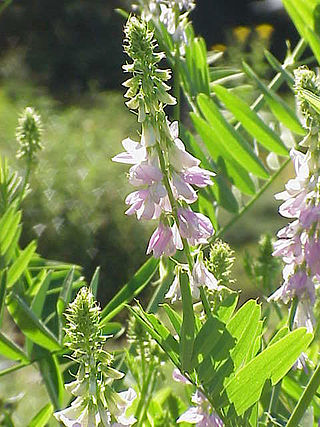
A galactagogue, or galactogogue, also known as a lactation inducer or milk booster, is a substance that promotes lactation in humans and other animals. It may be synthetic, plant-derived, or endogenous. They may be used to induce lactation and to treat low milk supply.
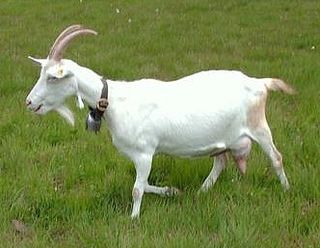
The Saanen is a Swiss breed of domestic goat. It takes its name from the Saanental in the Bernese Oberland, in the southern part of the Canton of Bern, in western Switzerland. It is a highly productive dairy goat and is distributed in more than eighty countries worldwide.

Goat milk is the milk of domestic goats. Goats produce about 2% of the world's total annual milk supply. Some goats are bred specifically for milk. Goat milk naturally has small, well-emulsified fat globules, which means the cream will stay in suspension for a longer period of time than cow's milk; therefore, it does not need to be homogenized. Eventually, the cream will rise to the top over a period of a few days. If the milk is to be used to make cheese, homogenization is not recommended, as this changes the structure of the milk, affecting the culture's ability to coagulate the milk and the final quality and yield of cheese.
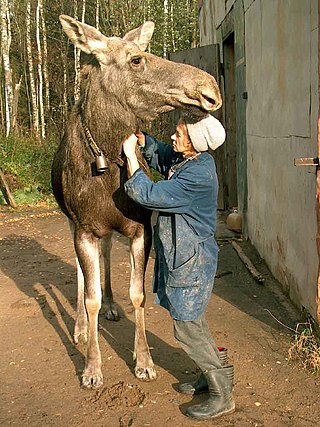
Moose milk, also known as elk milk, refers to milk produced by moose. Though it is most commonly consumed by moose calves, its production has also been commercialised in Russia, Sweden and Canada.

The goat or domestic goat is a domesticated species of goat-antelope typically kept as livestock. It was domesticated from the wild goat of Southwest Asia and Eastern Europe. The goat is a member of the animal family Bovidae and the tribe Caprini, meaning it is closely related to the sheep. There are over 300 distinct breeds of goat. It is one of the oldest domesticated species of animal, according to archaeological evidence that its earliest domestication occurred in Iran at 10,000 calibrated calendar years ago.

The Alpine is a medium to large sized breed of domestic goat known for its very good milking ability. They have no set colours or markings. They have horns, a straight profile and erect ears.
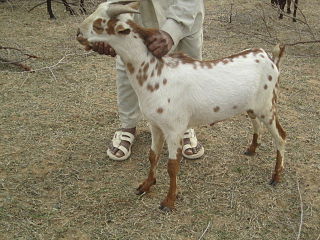
The Barbari or Bari is a breed of small domestic goat found in a wide area in India and Pakistan. It is distributed in the states of Haryana, Punjab and Uttar Pradesh in India, and in Punjab and Sindh provinces of Pakistan.
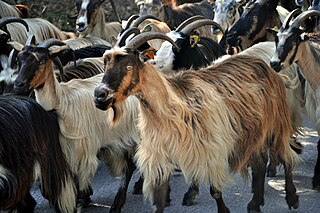
The Corsican goat breed from the French island of Corsica is used primarily for the production of milk.

The Maltese is a breed of domestic goat from the east and central Mediterranean area. It originates in Asia Minor, and takes its name from the island of Malta. It is raised mainly in southern Italy, and particularly in the islands of Sicily and Sardinia. Although the Maltese: Mogħża Maltija is reported to DAD-IS, the official view is that there are no pure-bred specimens of the breed in the Maltese islands, although it is possible that some modern Maltese goats are closely related to the original type. The Maltese is also present in Greece, Turkey and the Maghreb.
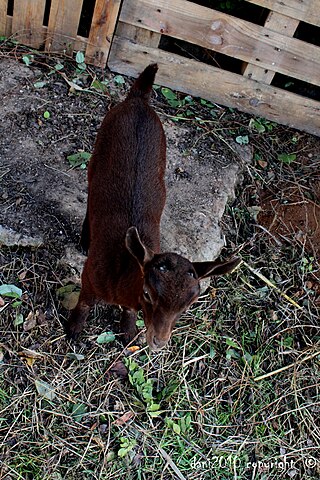
The Murciano-Granadina is a Spanish breed of dairy goat. It was created in 1975 when two existing breeds, the mahogany-coloured Murciana of Murcia and the black Granadina of Granada, began to be hybridised as a result of the official recognition of a single herdbook including both breeds. It is the most important dairy goat breed of Spain, with more than 500,000 milking females. It originated in the semi arid areas in south eastern Spain, including parts of Murcia, Almería, Granada and Alicante. They were bred for two main traits, milk production and its ability to continue this production in dry and nutrient poor regions. They have been introduced into several areas in Latin America as well as northern Africa.
The Sahelian goat is a breed of goat from West Africa, used mainly for meat and skin production.

Lactation describes the secretion of milk from the mammary glands and the period of time that a mother lactates to feed her young. The process naturally occurs with all sexually mature female mammals, although it may predate mammals. The process of feeding milk in all female creatures is called nursing, and in humans it is also called breastfeeding. Newborn infants often produce some milk from their own breast tissue, known colloquially as witch's milk.
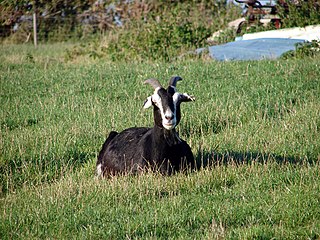
The British Alpine goat is a breed of domestic goat developed in the early 1900s. A standard British Alpine goat is black all over with white 'Swiss' markings. Another well-known breed that has these markings is the Toggenburg goat, and the breed was developed from the Toggenburg, native British goats, and Nubian genetics. The British Alpine is a high producer of quality goats' milk, and the breed can be found in many goat dairies as an acceptable milker. These goats are capable of extended lactations, sometimes even lasting close to two years.
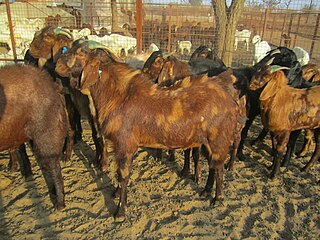
The Sirohi is an Indian breed of domestic goat. It is named for its area of origin, the Sirohi District of Rajasthan, in north-western India. It may be described as a dual-purpose breed, reared for both meat and milk production, or as meat breed. It is well adapted to the dry tropical climate of Rajasthan.
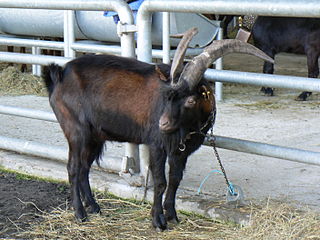
The Alpina Comune is a heterogeneous population of domestic goats widely distributed in the Alps of northern Italy, particularly in the regions of Lombardy and Piemonte. It is highly variable in size, in morphological characteristics such as the type, colour and pattern of its coat and the shape and carriage of its ears, and in type of use. It does not display any of the uniformity characteristic of a breed, other than a consistent hardiness and adaptation to mountain terrain. It is however officially recognised and protected as one. The name Alpina Comune, "common", is more used in Piemonte; in Lombardy it may be called Alpina Locale, "local", or simply Nostrana, "ours".

Goat farming involves the raising and breeding of domestic goats as a branch of animal husbandry. People farm goats principally for their meat, milk, fibre and skins.
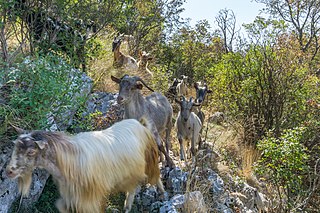
The Balkan goat is a domestic autochthonous breed, which originated from wild goats that inhabited the area of the Balkan Peninsula. Different environmental conditions in certain areas of the Balkans influenced the creation of different varieties.
References
- 1 2 3 Daniel. "Zalawadi".
- ↑ "Kappa casein gene polymorphism in Zalawadi goats" (PDF). Retrieved 2023-08-26.